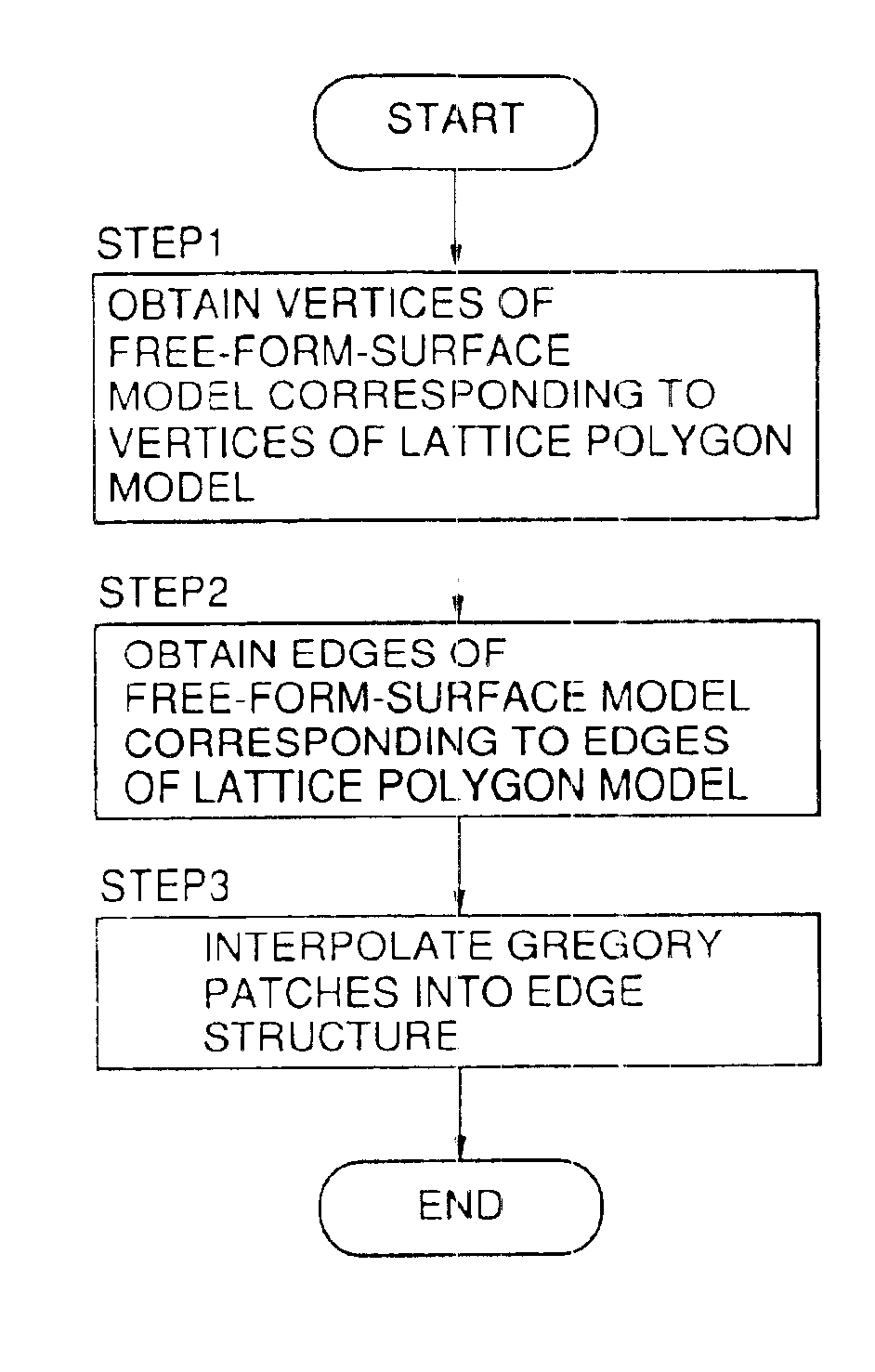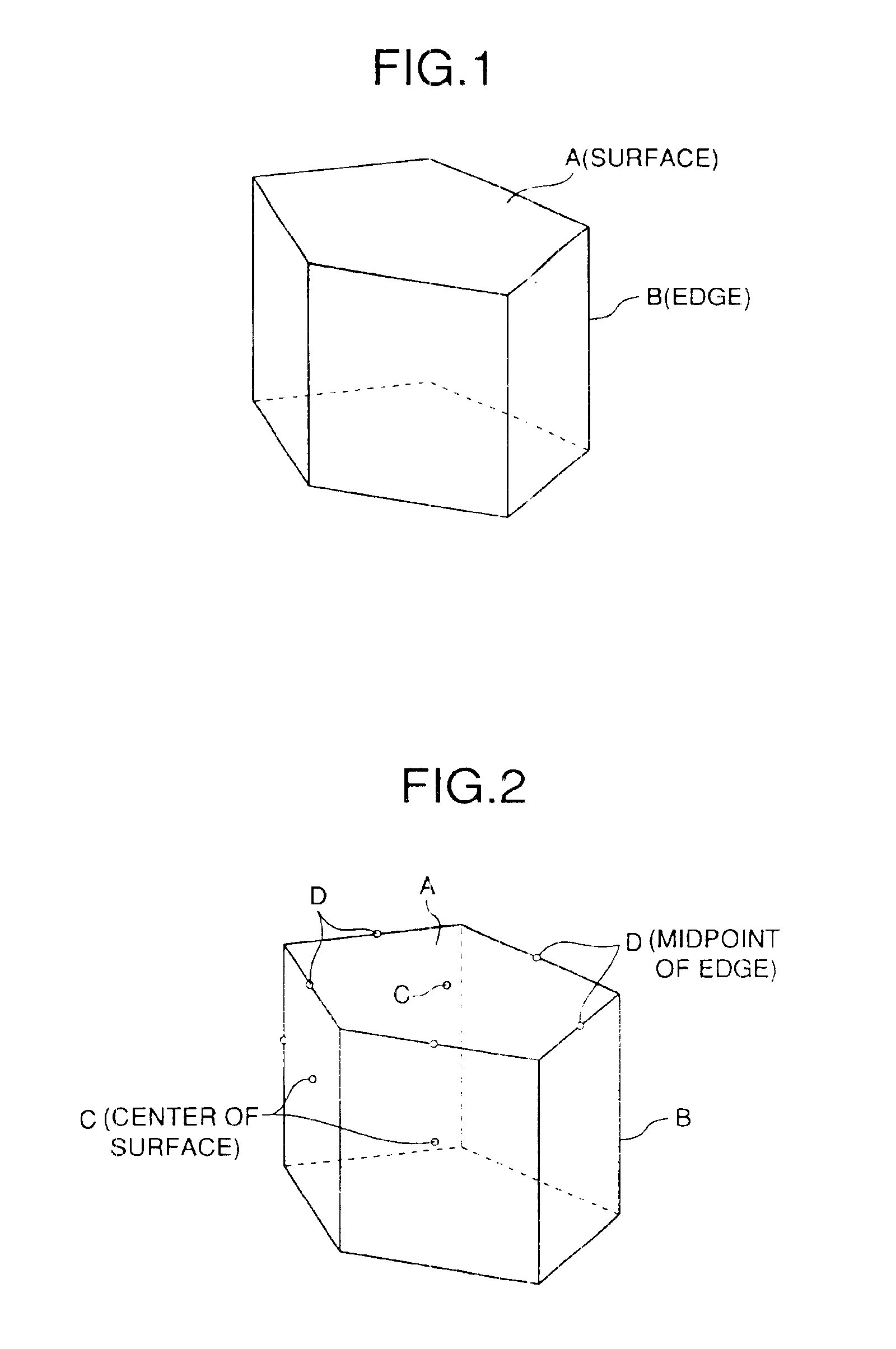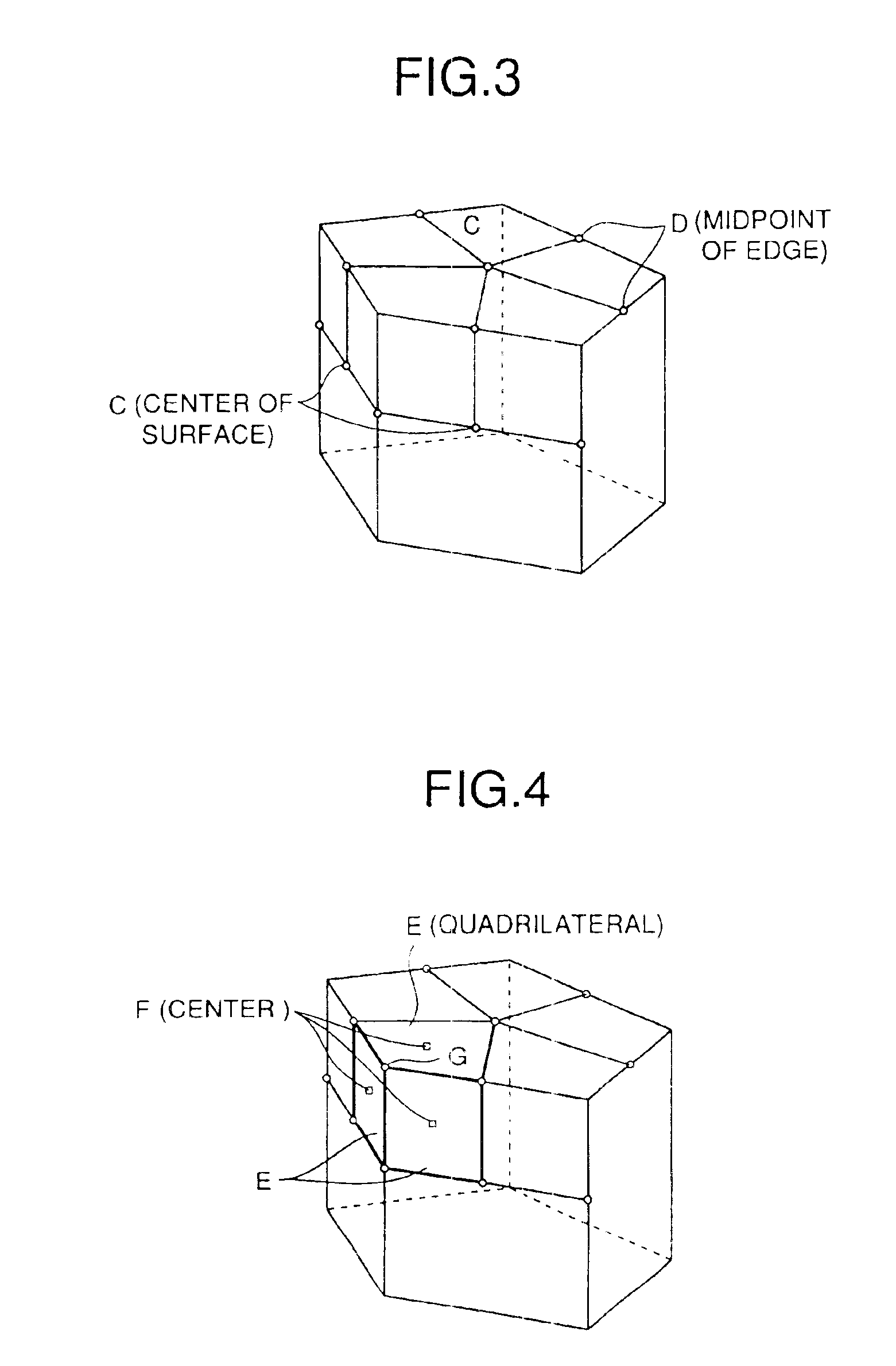Generation of free-form surface model by reversible rounding operation
reversible rounding technology, applied in the field of generating a free-form surface model, can solve the problems of preventing reuse of the lattice polygon model, no known scheme to reconstruct the original lattice polygon model from the free-form surface model generated therefrom, and increasing the detail of the represented shape requires an increase in data siz
- Summary
- Abstract
- Description
- Claims
- Application Information
AI Technical Summary
Benefits of technology
Problems solved by technology
Method used
Image
Examples
first embodiment
FIGS. 13A through 13D are tables showing data structures used in the present invention.
A vertex-coordinate table 200 of FIG. 13A stores therein 3-dimensional coordinates (x, y, z) of each vertex of a polygon model, which is also referred to as a lattice polygon model. The vertex-coordinate table 200 also stores therein 3-dimensional coordinates of vertices of a free-form surface model that is obtained by a method STEP1, which will be described later. The vertices of the lattice polygon model and the vertices of the free-form surface model are paired in the table.
A surface-index table 300 of FIG. 13B represents vertices of each polygon of a lattice polygon model by a series of index values, each of which indicates a row number of a row in the vertex-coordinate table 200. The size of the surface-index table 300 is equal to the number of lattice polygons.
An edge-index table 400 of FIG. 13C represents edges of a lattice polygon model and a free-form surface model where the edges are eac...
second embodiment
In the following, the present invention will be described.
FIG. 14 is an illustrative drawing-providing a brief overview of the second embodiment of the present invention.
In this second embodiment, a lattice structure that is a combination of a lattice polygon model and rounding information is used for representing shape rather than using a polygon structure that roughly approximates an original shape. Use of such a lattice structure enables free-form surfaces to be represented with high accuracy. Further, such a lattice structure can be transferred over a network because of a small data size thereof. In the first embodiment, a rounding operation generates a free-form surface model from a lattice polygon model alone. In the second embodiment, on the other hand, rounding information about lattice points and edges is provided in addition to the lattice polygon model, so that the rounding operation is applied to the combination of the model and the information, which may be transferred ...
example
According to the second embodiment of the present invention, a surface model generated from an original lattice structure that is a lattice polygon model of FIG. 9A plus some rounding information may be a shape that adds some roundness or sharpness to the vertices and / or edges shown in FIG. 9B. The surface model corresponding to the shape of FIG. 9B may undergo the inverse rounding operation, thereby generating the shape of FIG. 9A. As the shape of FIG. 9A is represented in the XVL format, data size of the output data can be reduced by a significant amount.
FIGS. 18A and 18B are illustrative drawings showing a human model represented in the XVL format and an example of shading display thereof. The XVL data shown in FIG. 18A has a relatively small data size (44 Kbytes in this example), it can be easily transmitted via a network. Based on this lattice polygon model, a surface model is created as shown in FIG. 18B. When this function is implemented in a viewer, such a configuration make...
PUM
 Login to View More
Login to View More Abstract
Description
Claims
Application Information
 Login to View More
Login to View More - R&D
- Intellectual Property
- Life Sciences
- Materials
- Tech Scout
- Unparalleled Data Quality
- Higher Quality Content
- 60% Fewer Hallucinations
Browse by: Latest US Patents, China's latest patents, Technical Efficacy Thesaurus, Application Domain, Technology Topic, Popular Technical Reports.
© 2025 PatSnap. All rights reserved.Legal|Privacy policy|Modern Slavery Act Transparency Statement|Sitemap|About US| Contact US: help@patsnap.com



